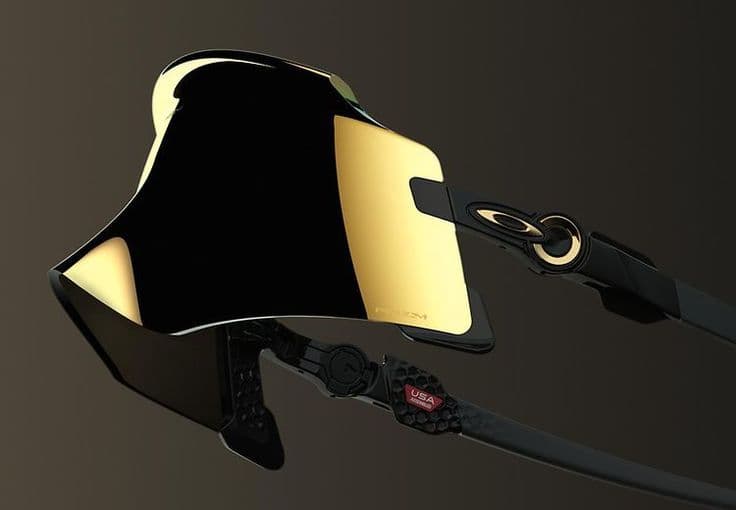Beyond the Frame: Decoding Meta and Oakley’s High-Stakes Play for the Future of Athletic Wearables

INTRODUCTION
The collision of sports performance and artificial intelligence has reached a watershed moment. Meta and Oakley’s groundbreaking collaboration—the Oakley Meta HSTN—isn’t just another wearable. It’s a meticulously engineered fusion of athletic heritage and cutting-edge AI, promising to redefine how athletes train, compete, and capture their most pivotal moments. Priced from $399 and launching globally this summer, this partnership transcends hardware—it’s positioning Meta to dominate the next frontier of AI-powered sports technology
The Genesis: Why Meta Chose Oakley
Meta’s existing Ray-Ban smart glasses proved consumer appetite for AI eyewear, selling over 2 million units since 2023. But athletics remained an untapped frontier. Enter Oakley—a brand synonymous with elite performance, worn by Olympians, cyclists, and extreme sports icons for decades. The strategic linchpin? Both brands fall under EssilorLuxottica’s umbrella, enabling seamless hardware integration. This partnership extension, signed in 2024, commits the companies to a decade-long collaboration on "multi-generational smart eyewear"
Meta’s intent is clear: dominate the performance wearables niche by leveraging Oakley’s credibility with athletes. As Alex Himel, Meta’s Head of Wearables, stated: "This is our first step into the performance category. There’s more to come"
Engineering the Ultimate Athletic Tool: Specifications Decoded
The Oakley Meta HSTN (pronounced "HOW-stuhn") isn’t a mild upgrade—it’s a quantum leap over Meta’s Ray-Ban line, purpose-built for physical extremes 211:
1. Endurance Powerhouse
- 8 hours active use—double the Ray-Ban’s 4-hour lifespan—addressing the critical need for longevity during marathons, tournaments, or all-day expeditions 711.
- Emergency-ready charging: 50% battery in 20 minutes via USB-C, plus a 48-hour charging case—essential for multi-day adventures where outlets are scarce 29.
2. Capture the Action in 3K Ultra HD
- A 12MP ultra-wide camera shoots 3K video (up from 1080p in Ray-Bans), enabling pro-level POV footage without carrying additional gear
- Hands-free control via voice commands (“Hey Meta, record a video”) ensures seamless operation mid-activity 213.
3. Built for the Elements
- IPX4 water/sweat resistance guarantees functionality in rain, ocean spray, or intense workouts 211.
- Five-microphone array with advanced wind-noise suppression—though real-world efficacy during cycling or sailing remains under review 914.
4. Performance-Optimized Optics
- Oakley PRIZM lenses enhance contrast and detail recognition—critical for spotting a golf ball mid-flight or reading wave patterns while surfing 914.
- Optional Transition lenses adapt to changing light, while prescription compatibility ensures accessibility.
The AI Game Changer: Beyond Siri on Your Face
Meta AI transforms these glasses from a camera accessory into an intelligent athletic assistant:
- Real-Time Environmental Intel: Ask “Hey Meta, wind speed?” while lining up a golf drive, or “Water temperature?” before a surf session—data integrates via connected smartphone 212.
- Contextual Awareness: Point your gaze at a landmark for historical info, or translate a trail sign mid-hike in real time 311.
- Accessibility Innovation: Integration with Be My Eyes connects visually impaired users to sighted volunteers describing surroundings
The Athletic Ambition: Who Are These Glasses Really For?
Meta and Oakley’s marketing leans hard into elite sports, featuring icons like Kylian Mbappé (soccer) and Patrick Mahomes (football). But the HSTN’s design reveals a strategic tension:
- The Pros:
- Hands-free documentation: Skateboarder Boo Johnson captures tricks without breaking flow 2.
- Audio coaching integration: Listen to workout cues without blocking ambient sound (crucial for safety) 914.
- Emergency calling: A lifesaving feature for climbers or backcountry skiers when hands are immobilized 9.
- The Cons (The "One-Style Problem"):
- Single-frame design (based on Oakley’s non-smart HSTN) lacks sport-specific tailoring. Cyclists need aerodynamics; runners require anti-slip grips; winter athletes need goggle compatibility 9.
- Weight distribution could cause slippage during high-impact motion, a noted concern by triathlete analysts 9.
- No native fitness app integration (e.g., Strava, Nike Training Club)—a missed opportunity for biometric synergy
The Market Play: Pricing, Positioning, and Meta’s Endgame
- Pricing Tier:
- $499: Limited "Desert 24k Prizm Polar" edition (preorder July 11) 211.
- $399: Standard models launching late summer 2025 1314.
- Global Rollout:
- Phase 1: 15 countries (US, Canada, UK, EU, Australia) 2.
- Phase 2: Mexico, India, UAE by late 2025 1213.
- Meta’s Strategic Goal: Cement smart glasses dominance before Apple’s rumored entry. EssilorLuxottica plans 10 million annual Meta-glass sales by 2026
The Verdict: Pioneering Tech in Search of Its Athletic Soul
The Oakley Meta HSTN is an undeniable technical marvel—3K capture, all-day battery, and context-aware AI set a new bar for smart eyewear. For casual adventurers, travelers, or tech enthusiasts, they’re a compelling (if premium) purchase.
Yet for elite athletes, they feel like a foundation, not a finale. The absence of sport-optimized designs, uncertain third-party app support, and untested wind noise handling leave room for iteration. As Blanchard asserts: "Who does Oakley think they’re making these for?" 9.
The Promise: Imagine cyclist-specific frames relaying real-time power metrics, or swim-safe models analyzing stroke technique. That would be a performance revolution.
Meta’s athletic ambitions are just beginning. If future models embrace sport-by-sport customization—retaining this tech backbone—the HSTN’s legacy may be birthing a new era of AI-empowered athleticism. Until then, they remain a fascinating, flawed glimpse of wearables’ future.
*Preorders open July 11 at Meta.com and Oakley.com. Launch events include UFC International Fight Week (June 25-27)